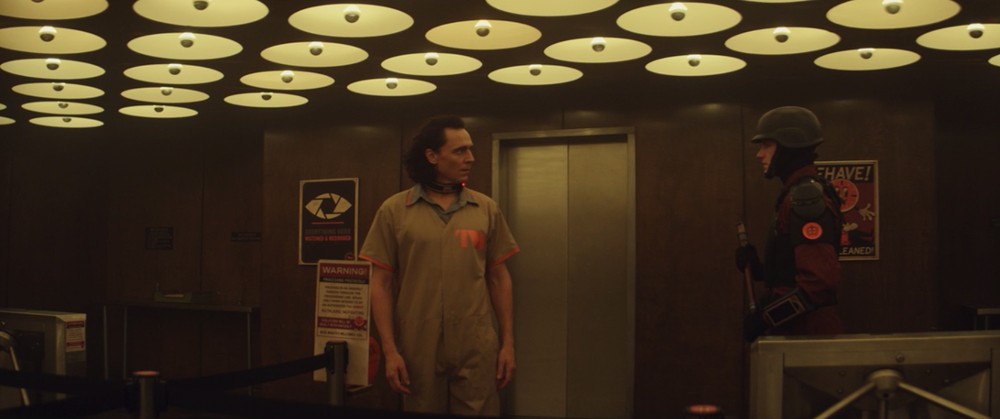
One craft that has always stood out in Marvel Studios’ various productions, whether they be theatrical releases or streaming series on Disney+, is the work of the art department, which has a lush world to play in given the distinctly different corners of the Marvel Cinematic Universe.
That is particularly the case with last year’s Loki, whose Production Designer Kasra Farahani not only created the vast headquarters of the Time Variance Authority (TVA) but also the other locations where Tom Hiddleston’s title character ventures in order to escape their grasp. In addition to doing some time traveling, Loki ends up on a planet that is about to be destroyed and another place known only as The Void.
Last year, WandaVision Production Designer Mark Worthington won his first Emmy for that superhero show, and there’s little reason why Farahani’s work on Loki shouldn’t follow suit, because while the series certainly culls inspiration from the Marvel comics, an enormous amount of creativity goes into creating all of the locations.
Below the Line spoke on the phone with Farahani a few weeks ago for the following interview:
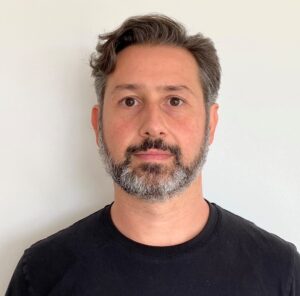
Below the Line: How were you approached for Loki? Had you worked with Director Kate Herron before?
Kasra Farahani: I had done a few Marvel films in various different roles. I was a concept artist for a long time, and I did some projects for Marvel as the concept artist. I was also an art director on a couple of other projects for Marvel, so I was sort of familiar with the Marvel Studios method and the nature of the project, but I didn’t know anybody on this project before. I had just heard about it, and I got in touch with my agent and asked if I could basically get an interview. I went in, and I met with Kate and Kevin Wright, our creative producer, and Trish [Stanard], who was our line producer, and Alexis, who’s another one of the Marvel executives, and just had a really good, immediate connection with them. The pitch deck that I prepared for the interview happened to have a lot of the same kind of imagery that Kate had presented when she was pitching to get the job, so we were just in sync right away, and then, a few days later, I was offered the job.
BTL: Did you get a script to have some idea of how many locations there would be between all the episodes?
Farahani: If I’m not mistaken, I had the first two scripts to read and then an outline for everything else. The scripts were really preliminary. They changed quite a lot by the time production actually started, but I had a little bit to go on to get a sense of the world, and the briefs that I’d gotten in this document that Michael Waldron, the head writer, had written, described a world that was Mad Men meets Blade Runner, and that was a really evocative and helpful starting point to organize my pitch around.
BTL: Having done stuff for Marvel before, do you take any inspiration from the comics, even though there’s so much that’s different?
Farahani: You know what? It’s a mix. There are some things for which the comics are super-relevant and helpful and other things where it’s less so the case. I feel like the infinite kind of bureaucratic, mid-century, monolithic organization of the TVA [is] definitely rooted in the way the TVA was depicted in the comics. Other things, like the Citadel at the End of Time being this floating asteroid, that’s also rooted in the comics. There’s some really great, evocative imagery [and] content that we were able to take inspiration from the comics, and then there’s just a whole bunch of stuff that the writers made up, and then there was a whole bunch of other stuff that we made up in the art department ourselves — but all within the atmosphere and the worlds that the scripts are laying out. But yeah, it’s kind of a mix of things, I think.
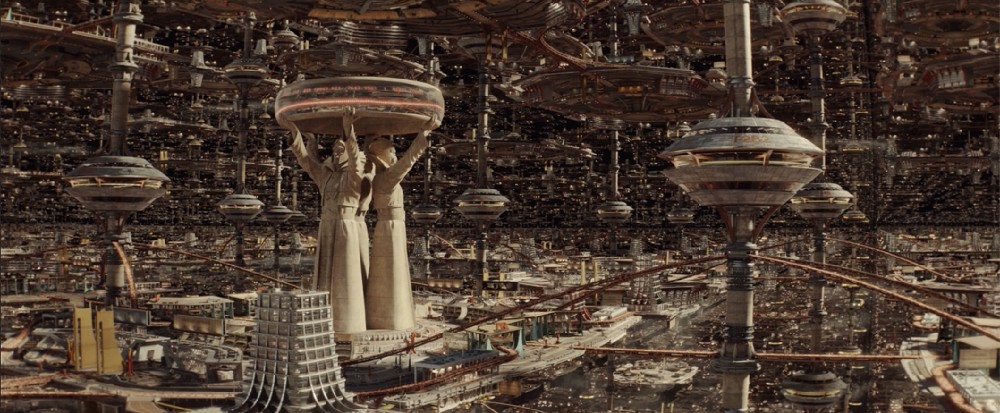
BTL: I’ve been reading comics for a long time but I wasn’t really familiar with the TVA. Was designing the TVA headquarters and the various locations within it a big part of the process of prepping for this show?
Farahani: Absolutely. From the Art Department’s standpoint, that was probably the biggest thing, just because so much of the story takes place in the TVA. Designing that and finding the exact look of the TVA, finding out what percentage of oppressive, monolithic, autocratic bureaucracy do we want to represent? And what percentage of happy, inviting glossy veneer do we introduce? It’s like Orwell’s 1984 wrapped in a veneer of Mad Men or the Beach Boys or some other more happy version of that very same period.
BTL: Are computers a big part of the production design process?
Farahani: Yeah, absolutely. I mean, computers are everything, more or less, these days. We do the basic design on a computer, and a lot of things are manufactured even on the computer, meaning that they’re milled out by computer-operated mills or 3D-printed, and then that is combined with a lot of traditional talent and artistry — carpenters and traditional sculptors and plasters and greens people. It’s kind of a mix of a lot of things, but I’d say the design process is heavily computerized.
BTL: I assume you put together your own team for the art department, so had you already worked with the set decorator before?
Farahani: I did put together my own team, but I had never worked with this decorator before. Her name is Claudia Bonfe — she came recommended to me, and we just seemed to click in terms of the look of it. She did a great job and she has impeccable taste, and I think [she] and her team really helped to elevate the look of the interiors of the TVA.
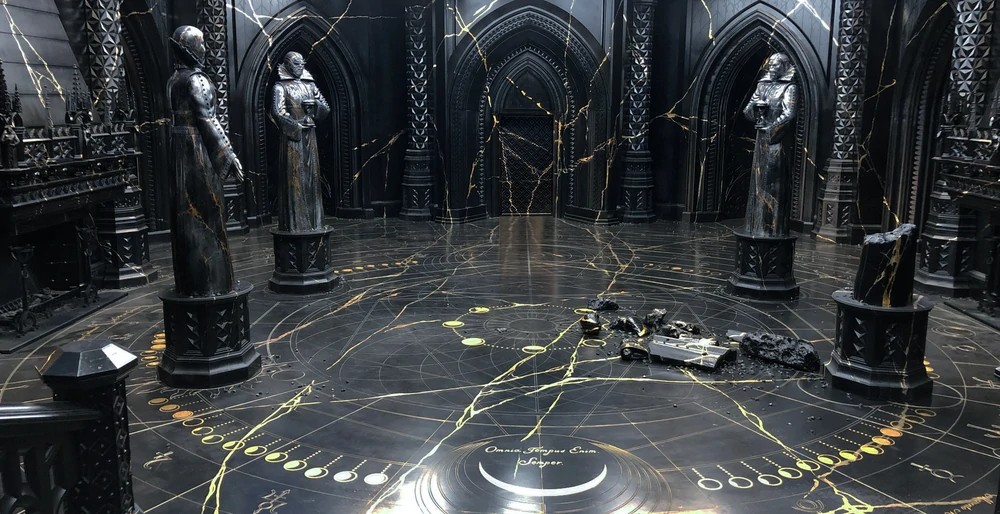
BTL: I assume that was a lot of fun because when I rewatched it, I noticed all of this outboard gear and electronics in the TVA that looked very familiar.
Farahani: Basically, the conceit, as it related to technology in the TVA, is that there was practically no digital technology. The idea was that analog technology just never stopped and continued to get more and more sophisticated, and then they combined it with pieces of weird tech they found on different timelines throughout the multiverse. That’s the kind of unique cocktail of technology that is the underpinning of the TVA, so it was a lot of trying to find retro, nostalgic, real-world tech items, to integrate into the otherwise sort of fantastical setting to help ground it and make it feel specific, and not just like any kind of sci-fi thing, but to have a unique voice. Or try to, at least.
BTL: Was there any location shooting or building on location for this?
Farahani: There was some. I would say it was predominantly done on stage and [the] studio backlot, but there were a few key locations. I’d say the most notable one is the Marriott Marquis in downtown Atlanta, which is a beautiful building designed by John Portman that we used for the TVA archives. There was definitely augmentation and visual effects — we added these massive timekeeper statues that filled the atrium — but the building was a beautiful piece of architecture, and it was really a great starting point for a location that had a huge amount of scale — bigger than we can afford to build, especially for how short the scene was, which is usually what drives that kind of a decision. In terms of locations, that was our most distinctive one.
BTL: I think I’ve stayed at that Marriott Marquis before, and it’s pretty busy, so how do you make a secretive Marvel series and keep it closed off?
Farahani: A lot of planning, basically. That’s how you do it.
BTL: Was this shooting all during COVID, or had it started shooting before the pandemic?
Farahani: We had started shooting before COVID. I can’t remember exactly how long, but we were only a few weeks in before COVID hit and everybody had to shut down. And then we were down for about six months, I think, before we came back.
BTL: Were all of the sets just left up? You just shut the doors and walked away?
Farahani: Yeah, all of our sets, like the time theater we’d been shooting, so that was standing, and Chrono Monitoring was built and finished and ready to shoot practically when COVID shut us down, and Miss Minute’s Cube, and all these things. Sets are built in a way… they’re not built like real buildings. They’re not meant to stand up for years and years, so let’s just say we were really delighted when we came back after six months, and the sets were [just] as we’d left them. I think that’s testimony to the great craftsmanship of the construction team that we have, because not all sets are going to really make it that long sitting around.
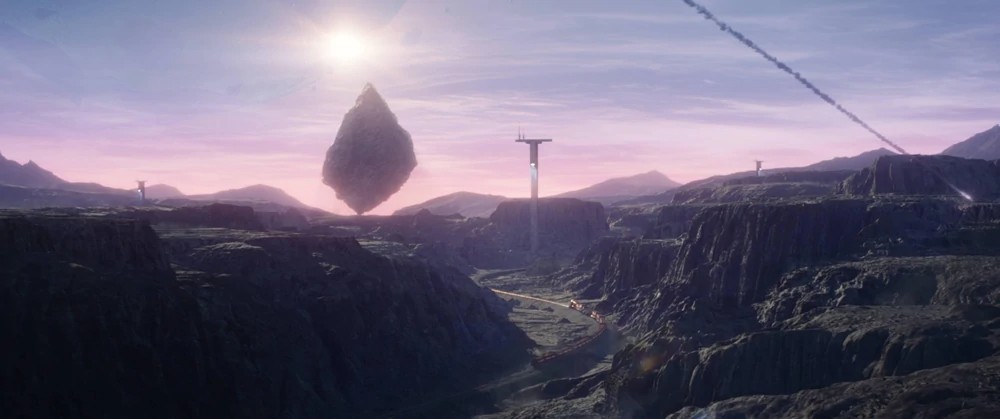
BTL: I’m not sure how much television you’ve done before this, but having the same director on all six episodes is a bit of a rarity. For a show like Loki, where you have so many different locations, it’s not uncommon to have different directors on each episode. How was it working with Kate on the whole thing?
Farahani: It was great, honestly. I think there was a lot about Loki Season 1 that, while it was a series, was very much structured like a long feature film in terms of how it was scheduled and [shot] on sets, and then changing over sound stages. I feel like, honestly, we had an awesome, creative brain trust on that season, where everyone was sort of in lockstep on it all, and it was just uniquely efficient, honestly. And Kate was a pleasure to work with. She’s so funny, has lots of great ideas, and yet is super-inviting to collaboration and other people’s ideas. It was great.
BTL: Do you know how many stages you had up and running or in some stage of production at any given time?
Farahani: I think for most of it, it was about four stages, but I think at one point, we were up to six, if I’m not mistaken.
BTL: I was curious about the turnaround of when you finished with a stage, how much time you had to build the next set, and how much shooting time you had other than the break.
Farahani: I can’t remember exactly. I think it was 80-something days of shooting over it, I think. Don’t hold me to it, but I think that’s what it was. The AD that we had was brilliant, Richard Graves, working with him to figure out the space changeovers and how much time it takes to knock one set down and put up another one and how to basically dance around all the different stages, keep the shoot company going, and give us enough time to build the next thing. It was just a very collaborative team process.
BTL: One of the reasons I asked about computers was because virtual production has become a thing nowadays where you can shoot on a volume with visual effects in place. There were certain episodes that seemed like they could have been done that way, such as when the planet is being destroyed. How much green screen or virtual production was used and how do you work with them?
Farahani: Yeah, it’s a lot of both. I think you’re talking about the Void episode or maybe Lamentis in Episode 3, so that was a combination. The opening sequence we shot in a quarry — that was another big location, actually — but visual effects did a lot of heavy augmentation. And then we were on a backlot, and we built basically everything they’re walking on, but VFX added backgrounds and sky. And then at the end of the episode, we’re in that big kind of one-er that happens in the alien city of Shuroo. That was a huge practical set. It was basically two blocks of an alien city that we built up to about 16 feet. So for most of the shots, it was pretty heavily in-camera, and then the camera would tilt up and you’d see above 16-feet, and then [we] would do set extension.
BTL: Is there a lot of back and forth in pre-production in terms of working with visual effects to figure that stuff out?
Farahani: Basically, we do whatever we can during pre-production, and actually through production, to create conceptual artwork and plans for things. Whether they’re built physically by construction, or they’re built digitally by visual effects, they need to be designed. We try to get out in front of the look of everything that’s going to be done in visual effects during shooting so that when the cinematographer and the director show up, they’re shooting the set, and there’s a blue screen there so that they know what’s there in that blue screen. So the actors know what’s there on that blue screen — they’re not guessing. We try to cover all those bases, and certainly, visual effects is a huge job, and then actually developing that idea and bringing it to life. At least from a big picture conceptual standpoint, we have that worked out before they shoot it.
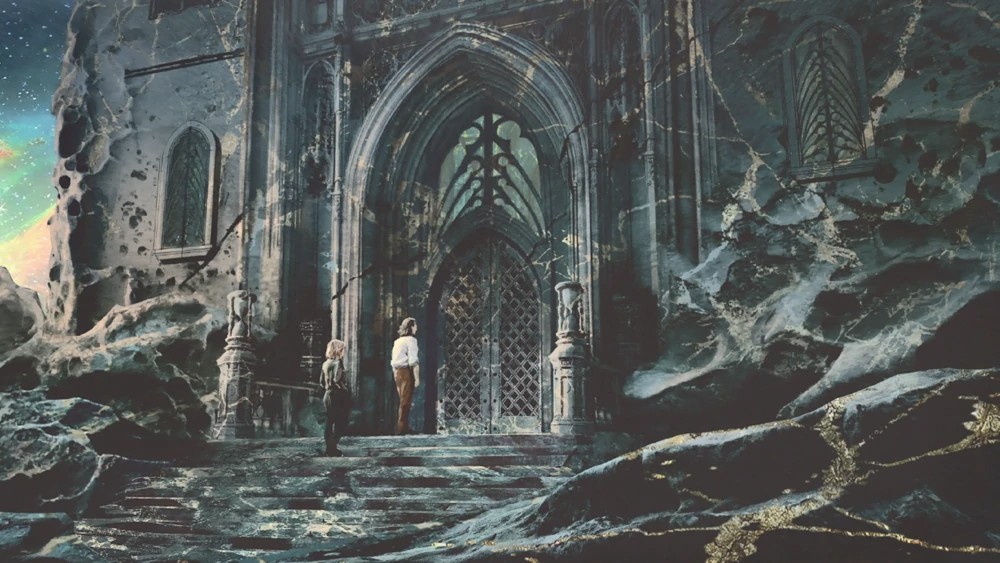
BTL: You mentioned the Citadel at the End of Time earlier, which is a very cool location, both its exterior and interior. Was that completely inspired by the comics or a combination of the comics and something else?
Farahani: Absolutely. The inspiration came] from the comics, which show a sci-fi-looking castle structure on top of an asteroid, and that’s what we started with, but then we kind of ran with this idea of a structure that was not built on top of an asteroid, but literally hewn from it, like cut out of this rock. Not unlike Petra in Jordan or something like that, where it has all this architectural detail and molding and all that, but it’s not built and brought in, it’s literally carved in place. So that was the idea for that. While we started with that idea from a comic, we evolved it and added layers of complexity to it.
BTL: How much are you involved once shooting is complete? Are you still working closely with Visual Effects throughout post?
Farahani: Not that much, honestly. I try to do everything I can before production concludes to create a brief for everything that Visual Effects is going to explore. So for instance, the TVA expanse and the look of the Void and the look of the mining town in Lamentis, and all the set extensions, we provide art for all that before I leave the project. Once I’m gone and production is over, other than the occasional email question from Kate or something, I’m not too involved anymore.
Season 1 of Loki is now streaming on Disney+.





